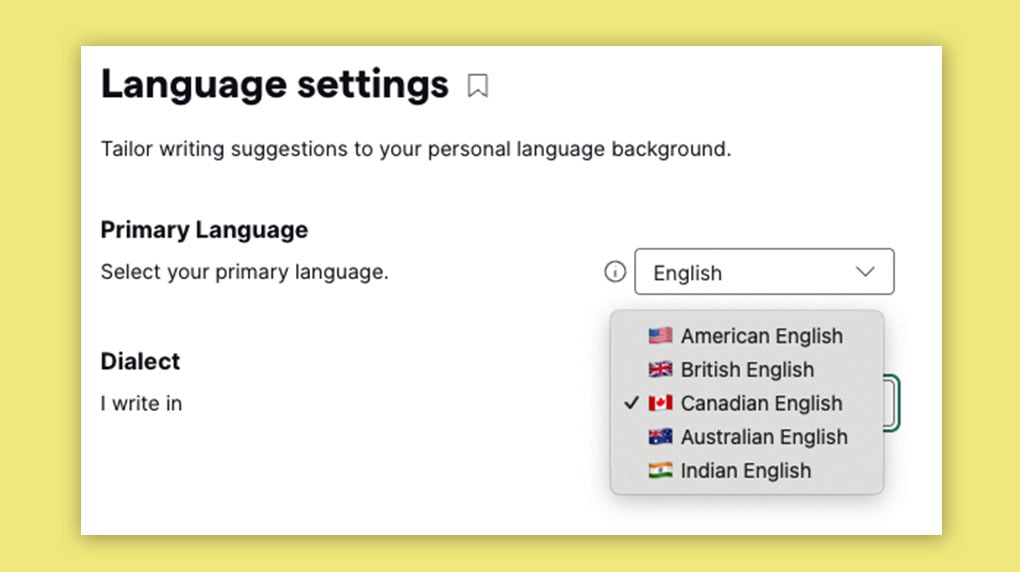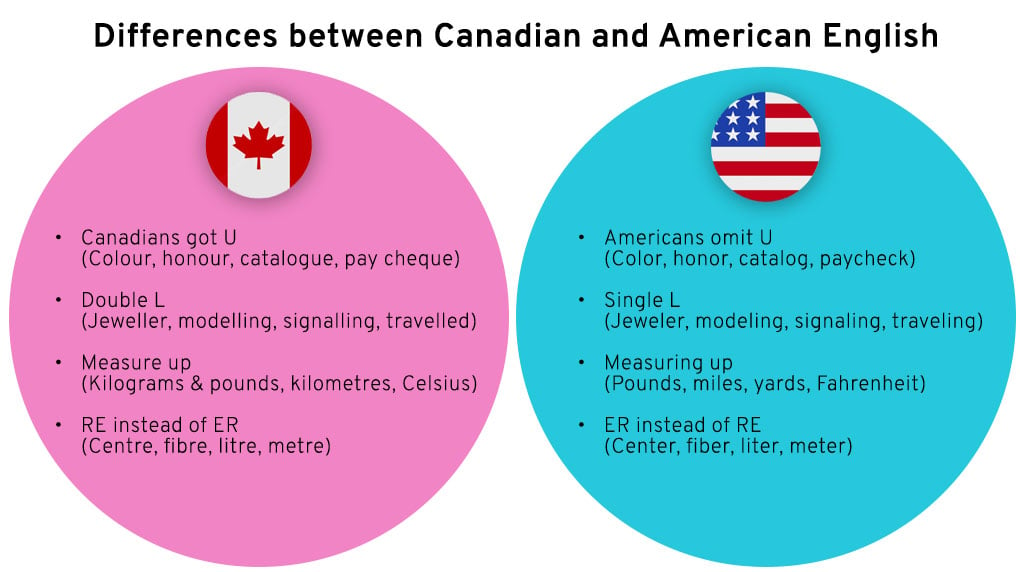So let’s say you expanded your American business into Canadian soil. Then, let’s say you started using the same marketing materials and brand voice for your Canadian audience as you do down south. Let’s also say you added a small maple leaf to your website footer and called it a day. Months go by, and you realize you aren’t necessarily impressed with the results you’re seeing. You did everything right! Well, almost everything.
It’s a surprisingly common problem. Ninety-nine per cent of the time, you’ve made the same mistake that countless brands have made before you. You thought adding "u" to a few words or changing your email signature to include a “cheers” instead of a “regards” made you sound Canadian? It’s time to rethink that strategy.
Canadian and American communication styles are more different than most brands expect. A tone that sounds confident in Chicago can come across as pushy in Calgary. Direct messaging that converts in Dallas might feel aggressive in Toronto. These differences show up everywhere. In how Canadians phrase feedback, handle criticism, approach decision-making, and even discuss achievements.
This matters more than it used to. Canadians have gotten pickier about which brands they trust, and they can tell when you haven't done your homework. They gravitate toward companies that feel genuinely Canadian, not ones that copied and pasted their American brand strategy.
You don't need to reinvent your brand voice. You need to understand how Canadians communicate differently and adjust your messaging accordingly so it doesn’t feel imported.
When confidence becomes pushiness (or even a little off-putting)
Most brands assume that good messaging works everywhere. Write compelling copy, hit the right pain points, showcase your expertise, and you should get results regardless of geography. After all, business is business, right?
Except it's not that simple when you're dealing with Canada and the United States. These two countries might share a language, but they don't share the same communication expectations in business settings. What sounds confident and authoritative to American ears can sometimes come across as aggressive and off-putting to Canadian customers.
Research on Canadian business communication shows that Canadian communication patterns are much more low-key than American, with reserve, understatement, diplomacy and tact as key attributes that contrast sharply with the more direct approach of many Americans.
Take something as simple as a follow-up email. Your American version might say, "We're the leading firm in this space, and we need to discuss your project immediately." That directness works well south of the border. Send that same message to Toronto, and you might as well have written "We're Americans who don't understand how business works here."
To strike the right tone and still drive results, brands need to master (digital) branding for growth in a way that respects cultural nuance without sacrificing clarity or confidence.

So, what makes Canadian communication different?
One thing you should know about Canadians is that they’ve turned being polite into a competitive sport. While Americans are busy cutting to the chase, Canadians are busy making sure everyone feels comfortable about the chase being cut to in the first place.
It's not that they're indecisive or overly apologetic (well, maybe a little apologetic). They just operate under the assumption that business relationships work better when nobody feels steamrolled. Where an American executive might fire off an email saying "We need to discuss this project immediately," their Canadian counterpart is more likely to write "When you have a moment, it might be worth exploring this further."
This isn't some quirky cultural observation either — it shows up in everything from how they structure meetings to how they deliver feedback. Canadians pepper their conversations with phrases like "would you mind" and "I was wondering if" because they genuinely believe collaboration works better than commands. They'd rather guide you toward a decision than push you into one.
Miss these cues, and your brand sounds foreign no matter how much you spend on marketing. Your response rates might tank, your follow-ups could get ignored, and you're left wondering why your messaging isn’t resonating with your audience.
The fix isn't complicated, but it does require admitting that maybe — just maybe — one size doesn't actually fit all when it comes to cross-border communication.

Why Canadian spelling exists in the first place
Most people know that Canadians spell "colour" with a "u" and Americans don't. What's less obvious is why Canadian spelling ended up being this unorthodox mix of British tradition and American practicality that somehow manages to annoy everyone equally.
Now, are you ready for a quick history lesson, Major Tom-style?
Canada inherited British spelling when it became a country in 1867, but Americans had already spent decades simplifying their system. Noah Webster's 1828 dictionary had established "color" over "colour" and "center" over "centre" — changes that were quietly spreading north through trade and newspapers.
When things got confusing enough that Sir John A. Macdonald had to issue an official ruling in 1890, he chose Britain. The prime minister ordered that "the English practice be uniformly followed" in all government documents, thinking that would settle it.
It didn't. Canadians had already started making their own choices based on what made sense. When American car companies dominated the industry, "tire" stuck instead of "tyre" because that's what appeared on every parts order and repair manual. But, other spellings stayed British. "Colour" and "centre" became markers of Canadian identity that people weren't willing to give up.

The bigger picture
Spelling differences are really just the tip of the iceberg when it comes to cross-border communication. The same attention to detail that makes you write "colour" instead of "color" should apply to much more important terminology, particularly when referring to Indigenous Peoples.
Indigenous vs Native
This is where Canadian and American usage diverges in ways that matter a little more. Terms like "Native" or "Indian" that might be acceptable in American contexts can immediately signal to Canadian readers that you're not familiar with their cultural landscape. Canadians expect you to know the difference between First Nations, Métis, and Inuit peoples, and to use current terminology that reflects respect and legal recognition.
Getting spelling right shows you care about Canadian preferences. Getting Indigenous terminology right shows you understand Canadian values. In a country where reconciliation and Indigenous rights are central to national conversations, using outdated or incorrect terms can undermine your credibility entirely.

Effective communication means adapting to your audience's cultural context, not just their market preferences. Whether you're writing "cheque" instead of "check" or "tire" instead of "tyre," you're showing Canadian clients that you've done your homework. And that’s the first step in establishing that you’re a brand worth trusting.
That attention to detail, from the smallest spelling choice to the most significant cultural consideration, is what separates communication that works from communication that just gets by.
Want to explore how your brand can expand its communications on both sides of the border? Check out our services and see how we can help you connect with your audiences, no matter where they’re from or the type of English they speak.